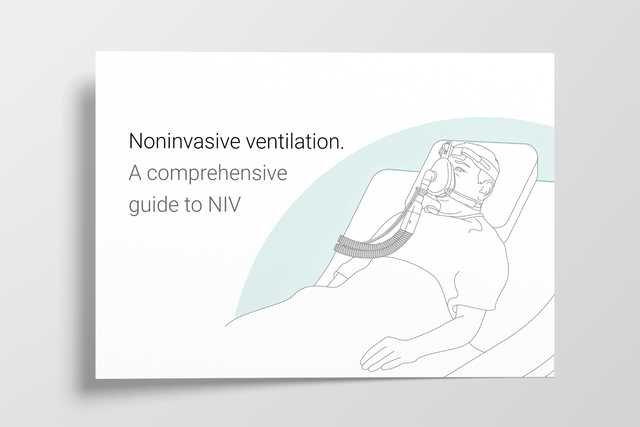
Author: Jean‑Michel Arnal, Senior Intensivist, Hopital Sainte Musse, Toulon, France
Date of first publication: 04.12.2023
Recent studies suggest the choice of post‑extubation respiratory support can be based on the patient's risk of weaning failure.

In the WEAN SAFE study, extubation failure ‑ defined as the need for reintubation within 7 days after extubation ‑ occurred in 14% of the included patients (
Very low failure risk
Patients at very low risk of reintubation: Low flow oxygen
Very low risk criteria
- Patient ventilated for less than 48 hours
- Aged under 65 years
- Absence of heart failure as the primary indication for mechanical ventilation
- Absence of COPD
- APACHE II score lower than 12 points on the day of extubation
- Body mass index lower than 30
- Absence of airway patency problems
- Ability to manage respiratory secretions
- Short weaning (≤ 1 days)
- Fewer than two comorbidities
Low and intermediate failure risk
Patients at low and intermediate risk of reintubation: High flow nasal therapy (20‑50 l/min) for 24 hours
Low risk criteria
- Patient ventilated for less than 7 days
- Aged under 65 years
- Absence of heart failure as the primary indication for mechanical ventilation
- Absence of COPD
- APACHE II score lower than 12 points on the day of extubation
- Body‑mass index lower than 30
- Absence of airway patency problems
- Ability to manage respiratory secretions
- Short weaning (≤ 1 days)
- Fewer than two comorbidities
Intermediate risk: One of the following criteria:
- Aged over 65 years
- Heart failure as the primary indication for mechanical ventilation
- Moderate‑to‑severe COPD
- APACHE II score higher than 12 on extubation day
- Body‑mass index above 30
- Airway patency problems, including high risk of developing laryngeal edema
- Inability to deal with respiratory secretions (inadequate cough reflex or suctioning > 2 times within 8 hours before extubation)
- Intermediate or prolonged weaning
- Two or more comorbidities
- Mechanical ventilation for more than 7 days
High failure risk
Patients at high risk of reintubation: NIV + high flow nasal therapy (20‑50 l/min) in between NIV sessions for 48 hours
High risk: Four or more of the following criteria:
- Age above 65 years
- Heart failure as the primary indication for mechanical ventilation
- Moderate‑to‑severe COPD
- APACHE II score higher than 12 on extubation day
- Body‑mass index above 30
- Airway patency problems (including high risk of developing laryngeal edema)
- Inability to deal with respiratory secretions (inadequate cough reflex or suctioning required > 2 times within 8 h before extubation)
- Intermediate or prolonged weaning
- Two or more comorbidities
- Mechanical ventilation for more than 7 days
- Hypercapnia (PaCO2 > 45 mmHg) at the end of the weaning trial
Footnotes
References
- 1. Pham T, Heunks L, Bellani G, et al. Weaning from mechanical ventilation in intensive care units across 50 countries (WEAN SAFE): a multicentre, prospective, observational cohort study [published correction appears in Lancet Respir Med. 2023 Mar;11(3):e25]. Lancet Respir Med. 2023;11(5):465‑476. doi:10.1016/S2213‑2600(22)00449‑0
- 2. Roca O, Blanch L, Hernández G. Postextubation Respiratory Support: One More Piece to the Puzzle. Am J Respir Crit Care Med. 2022;206(12):1437‑1438. doi:10.1164/rccm.202208‑1485ED
- 3. Hernández G, Vaquero C, González P, et al. Effect of Postextubation High‑Flow Nasal Cannula vs Conventional Oxygen Therapy on Reintubation in Low‑Risk Patients: A Randomized Clinical Trial. JAMA. 2016;315(13):1354‑1361. doi:10.1001/jama.2016.2711
- 4. Hernández G, Vaquero C, Colinas L, et al. Effect of Postextubation High‑Flow Nasal Cannula vs Noninvasive Ventilation on Reintubation and Postextubation Respiratory Failure in High‑Risk Patients: A Randomized Clinical Trial [published correction appears in JAMA. 2016 Nov 15;316(19):2047‑2048] [published correction appears in JAMA. 2017 Feb 28;317(8):858]. JAMA. 2016;316(15):1565‑1574. doi:10.1001/jama.2016.14194
- 5. Maggiore SM, Jaber S, Grieco DL, et al. High‑Flow Versus VenturiMask Oxygen Therapy to Prevent Reintubation in Hypoxemic Patients after Extubation: A Multicenter Randomized Clinical Trial. Am J Respir Crit Care Med. 2022;206(12):1452‑1462. doi:10.1164/rccm.202201‑0065OC
- 6. Hernández G, Vaquero C, Ortiz R, et al. Benefit with preventive noninvasive ventilation in subgroups of patients at high‑risk for reintubation: a post hoc analysis. J Intensive Care. 2022;10(1):43. Published 2022 Sep 11. doi:10.1186/s40560‑022‑00635‑2
- 7. Hernández G, Paredes I, Moran F, et al. Effect of postextubation noninvasive ventilation with active humidification vs high‑flow nasal cannula on reintubation in patients at very high risk for extubation failure: a randomized trial [published correction appears in Intensive Care Med. 2023 Mar;49(3):385]. Intensive Care Med. 2022;48(12):1751‑1759. doi:10.1007/s00134‑022‑06919‑3
Related articles. Get a deeper look

The complete guide to high flow nasal cannula therapy (HFNC)
Everything healthcare professionals need to know to get started with high flow nasal cannula therapy: the flow rate, FiO2 settings, when to use HFNC, selecting the interface, and much more.

A comprehensive guide to noninvasive ventilation (NIV)
Learn everything you need to know in our guide to NIV ventilation: from the medical abbreviation, to what noninvasive ventilation is, when to use it, selecting the interface and settings, and more.

Current management practices and outcomes in weaning from mechanical ventilation
A recent publication documents results from the largest international study so far to investigate the management and outcomes of weaning in ICU patients.


